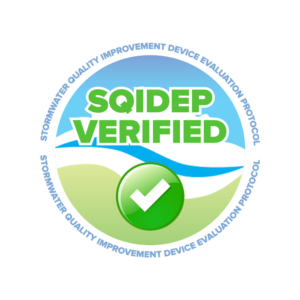SQIDEP requires at least 15 events spread across a full seasonal range (ie. Summer, Autumn, Winter and Spring). This means that both minimum event & seasonal event criteria must be met to fulfil these requirements.
This flexibility was provided for two potential scenarios;
- A wet year might provide 15 events in 2 months, but the pollutant loads and rainfall events vary seasonally, so more events shall be provided to satisfy the seasonal (temporal) coverage;
- A dry year might not produce 10 compliant events. So a minimum of 15 must be provided to limit the project duration and prevent it from extending indefinitely.
This requirement follows the lead of WashDoE and PDEP. As can be seen from recent submissions – more than 15 events are often submitted, because the data was available and fell within range of the event criteria. For example, the SPELFilter SQIDEP Verification Report (Page 8) states:
- Requirement – Events to be distributed to capture seasonal influences
- Evaluation finding – All seasons are covered by the data set
During the SPELFilter (AtlanFilter) verification, 37 events were submitted (Page 7) that spread across all four seasons. Of these, a few events were removed from the analysis for particular components – resulting in 31 compliant events for TSS (Total Suspended Solids), 28 for TP (Total Phosphorus) and 29 for TN (Total Nitrogen).
Reported as a complete dataset, SQIDEP’s event criteria were met, and enough data was available to make a statistically robust and repeatable assessment of device performance. This is representative of many of the SQIDEP submissions, which often have more than the minimum number of required events coupled with comprehensive year-round data.




